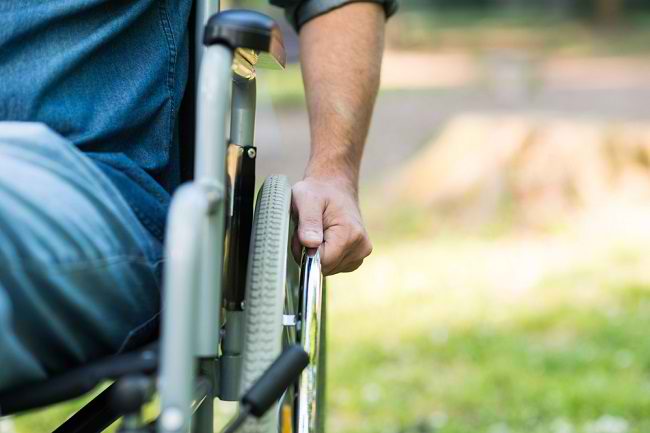Robotic surgery is an operation technique performed with the help of a special tool in the form of a robotic arm. Compared to other techniques, robotic surgery is able to provide surgeons with more control, accuracy, and flexibility in performing operations.
Even though it is robotic, surgery is not actually carried out by robots, but is still carried out by surgeons through a computer system. This system cannot operate by itself, so all decisions in the surgical process are still carried out by the surgeon.

Robotic surgery can be performed as an alternative to open surgery (conventional surgery) and laparoscopic surgery. In addition, robotic surgery is sometimes also used as a support in conventional surgical procedures.
Robotic Operation Components
There are two components used in robotic surgery techniques, namely a computer controller and a robotic arm. Here is the explanation:
Control computer
This tool is used by surgeons to view the body part to be operated on via a screen, controlling a robotic arm with a console in the form of a handle or joystick, and control the functions of other surgical instruments via the control panel, such as camera focus and precise movement of the robotic arm.
Robotic arm
The robotic arm acts as an extension of the surgeon's arm. This tool is equipped with a camera that functions to take 3-dimensional (3D) images of the operated body part and the instruments needed to perform the surgery.
Purpose and Indications of Robotic Surgery
Robotic surgery is generally used to perform minimally invasive surgical procedures, namely operations that are performed through small incisions. The following are some of the benefits of minimally invasive surgical procedures:
- Faster healing process
- Smaller and less visible surgical wound
- Lower risk of surgical complications, such as infection of the surgical site
- Less pain and blood loss
- Better operating results
Through robotic surgery, surgeons can carry out difficult and complex surgical processes more easily.
Robotic surgery techniques can be used to perform a variety of surgical procedures, including:
- Heart bypass surgery
- Cancer surgery on sensitive body parts, such as blood vessels and nerves
- Gallbladder removal surgery
- Hip replacement surgery
- Hysterectomy
- Complete or partial kidney removal surgery
- Kidney transplant
- heart valve surgery
- Radical cystectomy
- Tubectomy
Although it has many advantages, keep in mind that robotic surgery is not always an option. The doctor will weigh the benefits and risks of robotic surgery in each patient based on the condition being treated, as well as the comparison of the effectiveness of this technique with other surgical techniques.
Robotic Operation Warning
In some obese patients, robotic surgery techniques can not be done. This is because excess fat in the body can interfere with the surgeon's vision when he sees the part of the body that must be operated on.
However, that does not mean that all obese people cannot undergo robotic surgery. The decision will be made by the surgeon based on the patient's condition, the type of surgery performed, and several other factors.
In addition, patients should also tell the surgeon if they are taking medicines that can slow blood clotting, such as aspirin, warfarin, and clopidogrel. The use of the drug must be discontinued 10 days before the operation, because otherwise it can cause bleeding during the operation.
Not only drugs that can slow blood clotting, patients should also tell the surgeon if they are taking herbal medicines and supplements.
Robotic Operation Preparation
Patients will be asked to fast for 8 hours before undergoing surgery. If needed, the patient may also have to undergo enemas or take laxatives to cleanse the intestines, depending on the need for the surgical procedure to be performed.
Robotic Surgery Procedure
The patient will be taken to the operating room and asked to lie on the operating table. After that, the patient will be given general anesthesia so that he does not feel pain during the operation.
Surgery begins with making a small incision measuring 1-2 cm in the body to be operated on. After that, a small flexible tube equipped with a lighted camera (endoscope) and other instruments will be inserted into the patient's body through the incisions that have been made.
One surgeon will sit in front of the computer controller to operate the robotic arm, while the other surgeon will act as an assistant, tasked with ensuring the correct placement of the instrument on the patient's body.
The robotic arm will convert the commands given by the surgeon via the computer into movements or maneuvers in the patient's body precisely. If there are organs that need to be removed, such as the gallbladder, the organs will be removed through the incisions that have been made.
After the procedure is complete, the incision will be covered with a small bandage.
After Robotic Surgery
After the operation, the patient will be taken to the recovery room. Patients are generally able to return to walking the day after undergoing robotic surgery. However, depending on the type of surgical procedure performed, the patient may need to be hospitalized for several days.
There are several things that patients need to do to speed up the recovery process, namely:
- Do not lift heavy weights or tense muscles until you get permission from the doctor to return to normal activities
- Not driving a vehicle for a week after undergoing the surgical procedure
- Follow the doctor's advice in using pain relievers
- Call your doctor if the pain gets worse, especially if the pain doesn't go away after taking painkillers, or if you have nausea, vomiting, and bleeding
- Call the doctor if redness or pus appears in the surgical incision, because this can be a sign of infection
Robotic Surgery Complications and Side Effects
Although robotic surgery is a safe surgical technique, this procedure still carries the risk of causing complications. Complications of robotic surgery are similar to complications from surgery in general, such as:
- Allergic reactions to drugs used during surgery
- Difficulty breathing
- Bleeding
- Infection









